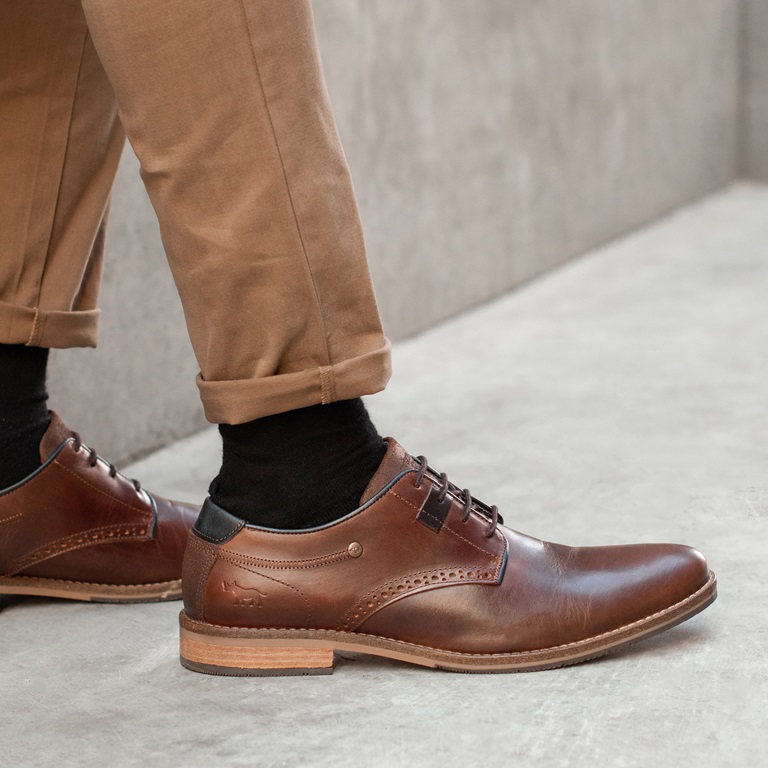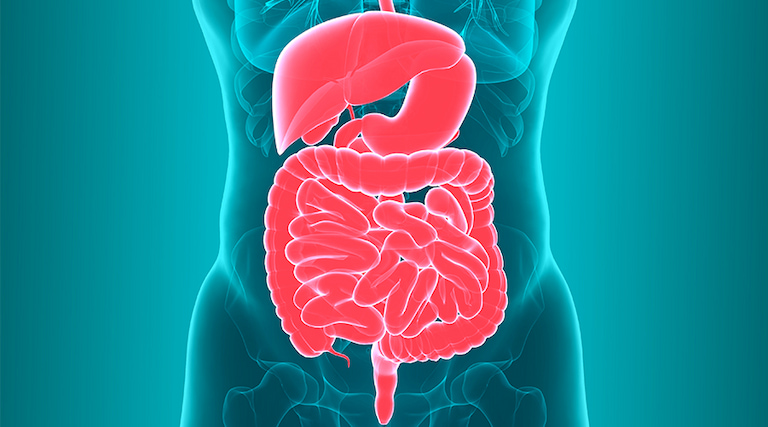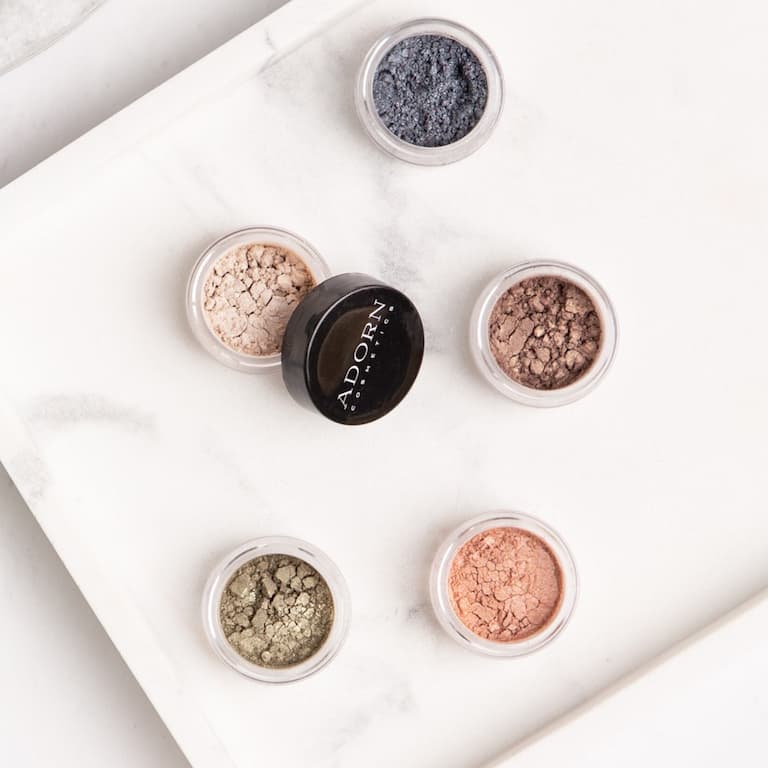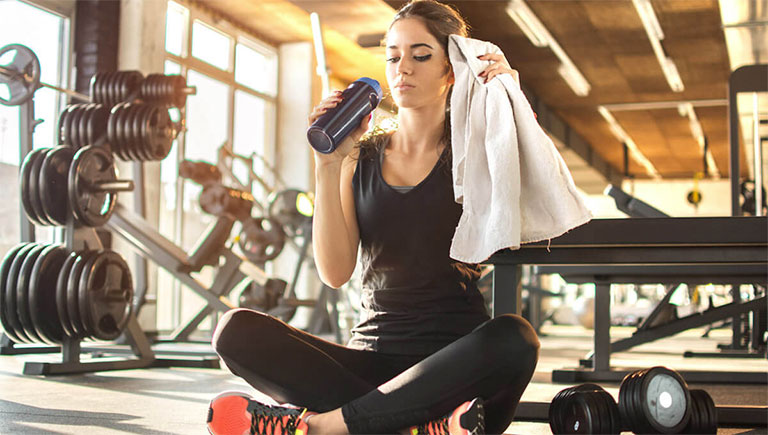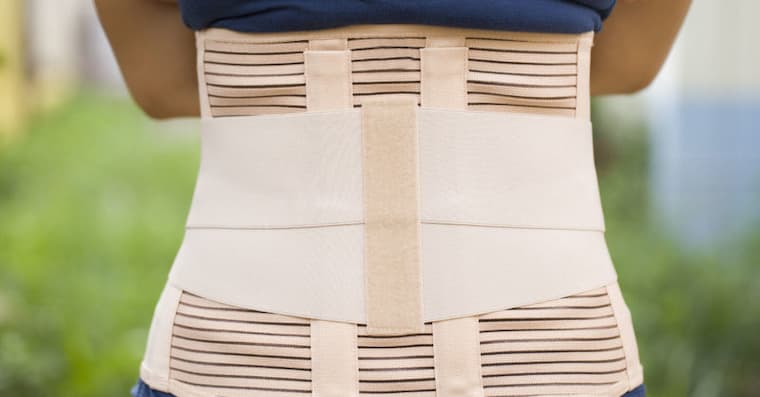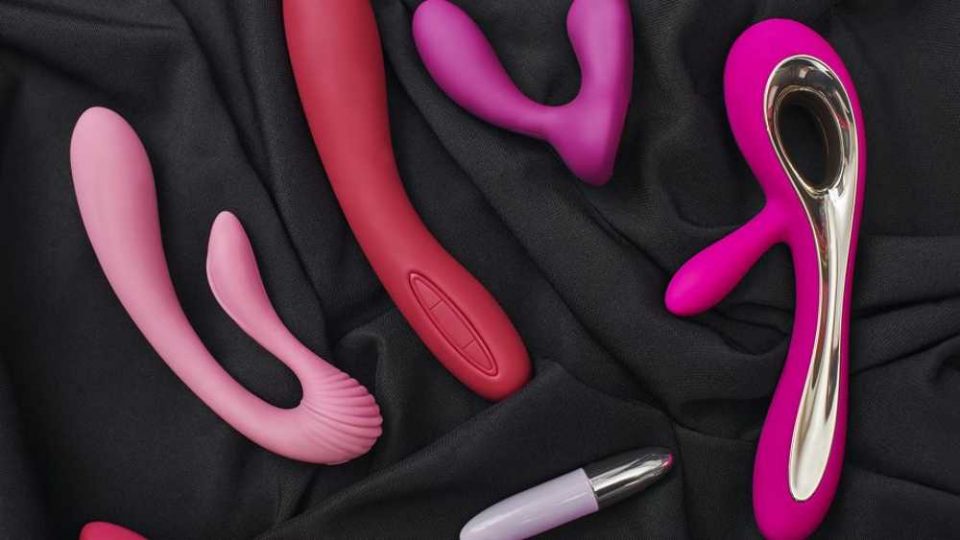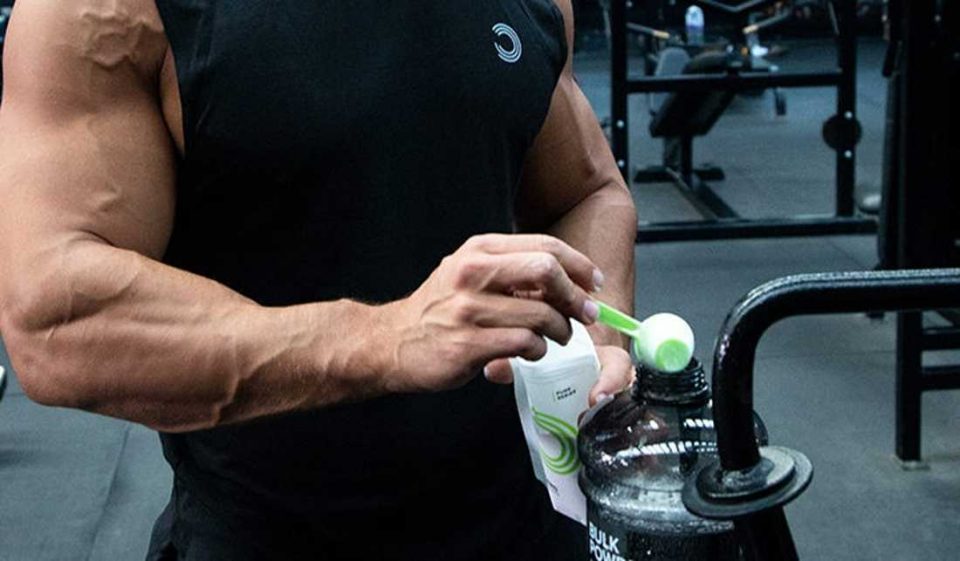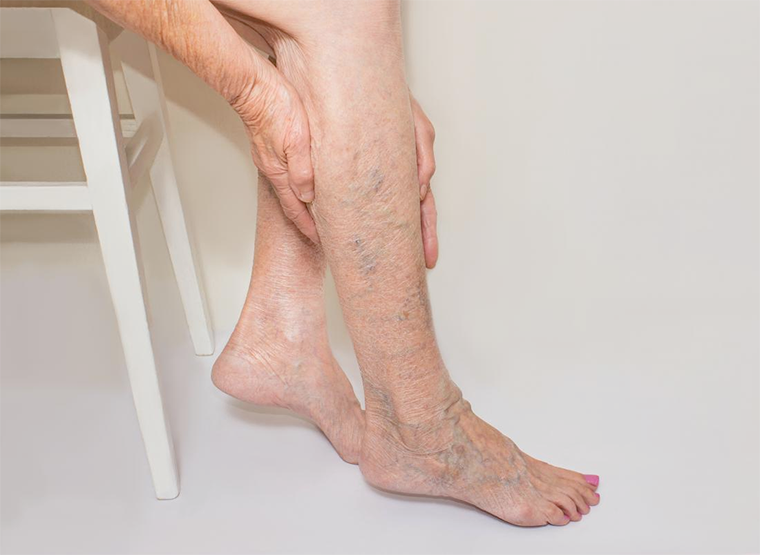A well-tailored suit can do wonders for your look, but it will still be incomplete without the right accessories. The right additions – a stylish watch, a pocket square, or the perfect tie – can elevate your outfit, giving it personality and polish. Whether you’re dressing for a formal event, business meeting, or a special occasion, accessorising properly is just as important as choosing the right suit.
Health & Beauty
10 Easy Steps to a Happier, Healthier Gut
A healthy gut can boost your energy, improve your mood, and strengthen your immune system. If you’ve been feeling sluggish, bloated, or off lately, it might be time to focus on your gut health. The good news? It’s easier than you think to give your gut some love. Here are 10 straightforward steps to help you achieve a happier, healthier gut, no matter where you are in your wellness journey.
Step 1: Eat More Fiber
Fibre is found in fruits, vegetables, whole grains, and legumes, and it acts as fuel for the beneficial bacteria living in your gut. These bacteria help maintain good gut health, which is key to good digestion and overall health. Don’t feel like you need to overhaul your entire diet overnight—start small. Add an apple or a handful of berries to your morning routine, or swap out white bread for a hearty whole-grain loaf. Over time, as your fibre intake increases, you’ll notice a big difference in how your gut feels.
Step 2: Stay Hydrated
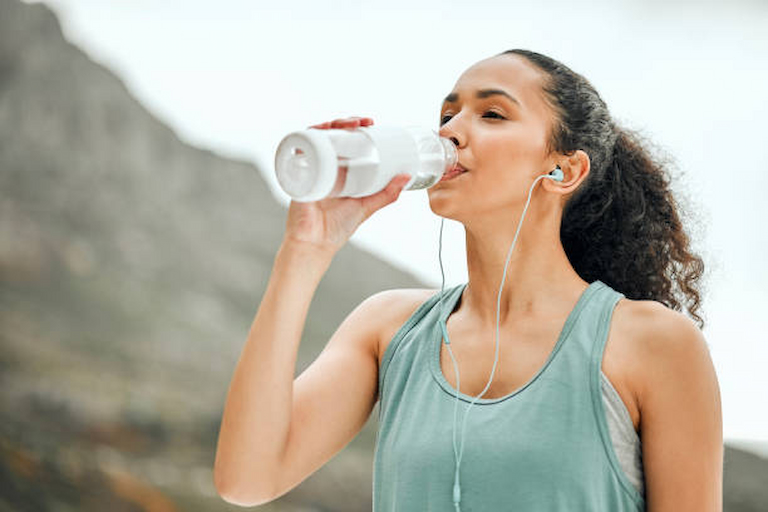
Water is life for you and your gut. Staying hydrated keeps your digestive system running smoothly, helps food move through your intestines, and prevents constipation. The magic number for water intake is often said to be eight glasses a day, but your actual needs might vary depending on your activity level, climate, or diet. If plain water doesn’t excite you, jazz it up with a slice of lemon, cucumber, or a sprig of mint. Herbal teas are also a fantastic option and can add variety while keeping you hydrated.
Step 3: Probiotics to the Rescue
Probiotics are like tiny superheroes for your gut. These live bacteria can restore and maintain the delicate balance in your microbiome, improving digestion and even boosting immunity. You can find probiotics in fermented foods like yoghurt, kefir, sauerkraut, and kimchi. If fermented foods aren’t your thing, don’t worry—probiotic supplements are widely available. When shopping for one, look for a product with diverse strains and a high count of colony-forming units (CFUs) to ensure you’re getting the best results.
Step 4: Cut Back on Sugar
We all love a sweet treat, but too much sugar can throw your gut bacteria out of whack. Harmful bacteria thrive on sugar, and a diet high in sweets can reduce the diversity of your microbiome, leading to digestive issues and even inflammation. Try swapping processed sugary snacks for natural alternatives like fresh fruit, nuts, or even a square of dark chocolate. Cutting back on sugar might feel tough at first, but your gut (and your taste buds) will adapt, leaving you feeling lighter and more balanced.
Step 5: Manage Stress Levels
Your gut and brain are like best friends; they’re constantly in communication through what’s known as the gut-brain axis. This means that when you’re stressed, your gut feels it too, which can lead to problems like bloating, cramping, or changes in bowel habits. Finding ways to manage stress is crucial for a happy gut. Incorporate relaxing activities into your day, whether that’s deep breathing exercises, meditation, yoga, or even a walk in nature. It doesn’t have to be complicated; even a few minutes of mindfulness can work wonders.
Step 6: Exercise Regularly
Getting moving isn’t just great for your heart and muscles; it’s fantastic for your gut too. Regular physical activity promotes the growth of diverse gut bacteria, improves digestion, and can even help reduce inflammation. The best part? You don’t need to run marathons to see the benefits. A 30-minute brisk walk, a quick yoga session, or a casual bike ride can all help keep your gut happy. The key is consistency—find an activity you enjoy and make it part of your routine.
Step 7: Chew Your Food Thoroughly
Here’s a step that’s often overlooked: digestion starts in your mouth. Chewing your food thoroughly breaks it down into smaller particles, making it easier for your stomach and intestines to process. Plus, eating slowly gives your brain time to register that you’re full, which can prevent overeating and improve overall digestion. Turn your meals into a mindful experience by focusing on the textures and flavours of your food, and watch how your gut health improves over time.
Step 8: Get Enough Sleep

Your body does a lot of its healing and regenerating while you sleep, and your gut is no exception. Poor sleep can disrupt the balance of your gut microbiome, leading to digestive problems and even impacting your immune system. Aim for 7-9 hours of quality sleep each night, and try to maintain a consistent sleep schedule, even on weekends. Establishing a relaxing bedtime routine, like reading a book or taking a warm bath, can help signal to your body that it’s time to wind down.
Step 9: Avoid Overusing Antibiotics
While antibiotics can be lifesaving, they’re also a double-edged sword when it comes to your gut health. Antibiotics kill off harmful bacteria, but they also wipe out the good bacteria that your gut needs to stay balanced. Use antibiotics only when absolutely necessary and always follow your doctor’s guidance. If you do need to take them, consider incorporating probiotics into your routine to help rebuild your gut’s microbial community.
Step 10: Listen to Your Gut
Your gut has a way of letting you know when something isn’t quite right. Pay attention to how your body reacts to different foods and habits. If certain foods consistently leave you feeling bloated, gassy, or uncomfortable, they might not be the best fit for your digestive system. Keeping a food diary can help you identify potential triggers and make adjustments accordingly. Remember, everyone’s gut is unique, so what works for someone else might not work for you.
Wrapping It Up
Achieving a happier, healthier gut doesn’t require extreme diets or expensive treatments. Add these simple and practical steps into your daily life, and you’ll be on your way to better digestion, improved mood, and overall well-being. Your gut plays a central role in your health, so treat it with the care and attention it deserves. Small, consistent changes can lead to significant results, and your body will thank you every step of the way.
Stepping Into the World of Protein Supplements: Whey vs. Milk Powder
Improving stamina and performance during exercise often requires more than just effort—it depends on getting the right amount of protein. For many people, achieving their daily protein intake solely through food is challenging, leading them to turn to protein supplements. These supplements play a crucial role in fitness routines, particularly for building muscle, losing weight, and aiding recovery. Among the wide range of supplements available, whey protein and milk powder are two of the most popular choices among fitness enthusiasts and professionals alike.
What Is Whey Protein Powder?

Whey is the liquid byproduct left behind during the cheese-making process. This liquid undergoes several filtration stages to create different types of whey protein. Compared to milk (casein) protein, whey contains approximately 20% more leucine, an essential amino acid that supports protein synthesis, hormone regulation, blood sugar management, and muscle growth.
Whey protein is widely available in powder form, making it highly convenient. It can be mixed into smoothies, shakes, or even meals, offering a versatile way to enhance recovery and optimise fitness results. Thanks to its fast absorption rate, powdered whey supplements are particularly effective in promoting muscle repair and growth immediately after exercise.
What Is Milk Protein Powder?
Milk protein, often referred to as casein, comprises around 80% casein and 20% whey. Like whey, casein protein aids in muscle tissue growth but has distinct properties that set it apart. During cheese production, curds (casein) and liquid (whey) are separated, with the curds either processed into cheese or converted into casein powder.
Casein is a slow-digesting protein, forming a gel-like structure in the stomach that gradually releases amino acids into the bloodstream. This characteristic makes it ideal for consumption before bed, as it provides a steady supply of nutrients during fasting periods.
Key Similarities and Differences
Chemical and Physical Properties
The primary difference between whey and casein lies in their digestion and absorption rates. Whey protein is rapidly absorbed, resulting in a quick spike of amino acids in the bloodstream. This makes it ideal for use around workouts, where fast recovery and muscle repair are essential.
In contrast, casein digests more slowly, forming a gel-like consistency in the stomach. This slow release of amino acids ensures a prolonged supply of nutrients, supporting muscle maintenance over several hours.
Production
Both whey and casein originate from the cheese-making process. Whey is the liquid portion, while casein is the curd. Each undergoes filtration and processing to create powdered supplements suitable for consumption.
Amino Acid Content
Both proteins provide essential amino acids, but their profiles differ slightly. Whey protein is rich in branched-chain amino acids (BCAAs), such as leucine, isoleucine, and valine, which are crucial for muscle recovery and growth. Casein, on the other hand, contains higher levels of amino acids like phenylalanine, methionine, and histidine, which also promote muscle development but at a slower rate.
Digestion and Absorption Rates
Casein protein’s slow digestion allows for a steady release of amino acids over an extended period—up to five hours. This makes it an excellent choice for overnight use, providing nourishment while the body is in a fasting state.
Whey protein, however, is absorbed rapidly, with amino acids peaking in the bloodstream within 90 minutes. This quick action is why whey is recommended immediately before or after workouts, as it supports immediate muscle recovery and growth.
Side Effects
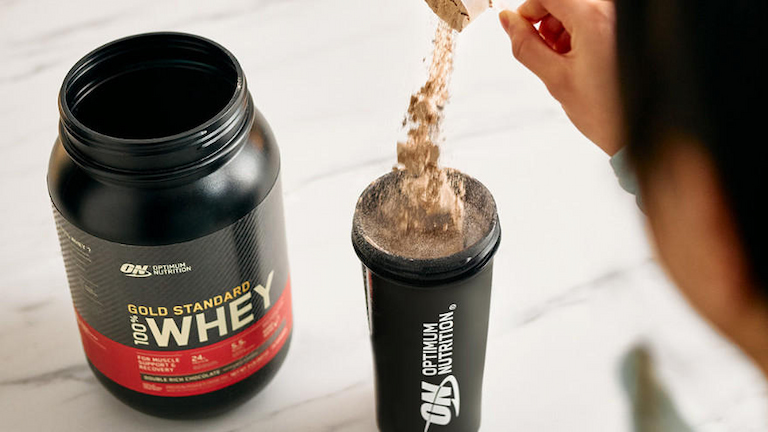
Most people tolerate whey protein well, but those with dairy sensitivities may experience bloating, stomach discomfort, diarrhoea, or nausea. If you’re sensitive to lactose, consider whey protein isolate, which contains significantly less lactose than other forms.
Casein protein is also generally well-tolerated, but it’s unsuitable for those with milk allergies or lactose intolerance. Additionally, some casein powders may include soy as an additive, which could be problematic for individuals with soy allergies. Always check product labels carefully to ensure they meet your dietary needs.
It’s important to note that excessive protein intake—whether from whey or casein—can strain the kidneys and liver. Those with existing kidney or liver conditions should consult a healthcare professional and limit their protein consumption accordingly.
Final Thoughts
Both whey and casein protein have unique benefits that cater to different fitness needs. For those focusing on immediate recovery and performance, whey protein is a clear winner. Meanwhile, casein is a better option for long-term muscle nourishment and maintenance.
Whichever you choose, ensure the product aligns with your dietary preferences, fitness goals, and health considerations. By incorporating the right protein supplement into your routine, you’ll be one step closer to achieving your fitness ambitions while supporting overall health.
The Complete Guide to Using CPAP Machines to Treat Sleep Apnea
Sleep apnea is a common but often overlooked sleep disorder characterised by repeated interruptions in breathing throughout the night. These interruptions, caused by a blocked or narrowed airway, result in poor sleep quality and different health issues if left untreated. Fortunately, CPAP (Continuous Positive Airway Pressure) machines offer an effective solution, helping individuals with sleep apnea breathe more easily and rest more soundly.
Elevate Style and Protection: 3 Steps to Choosing the Ideal Men’s Sunglasses
The sunglasses are an accessory that can make or break the entire look. You need a pair that will complement your best features and hide the imperfections. We all have distinctive features and not everything will suit everyone, which is why we’ve singled out three crucial steps to help you out with making the right choice. In general, your choice comes down to sunglasses according to the shape of our face, type of frame and material, and type of lens and colour.
How to Achieve a Natural Look by Mastering Simple Makeup Products
In the world of ever-changing beauty trends, the decision to stay true to yourself and embrace your natural beauty is pivotal. So many of these trends have set unrealistic standards which resulted in low self-esteem and heightened anxiety among women. While some are chasing the dramatic look of wearing heavy makeup other women prefer the minimalist approach of applying simple cosmetic products to enhance their natural features.
This simple trend of “no makeup” makeup has been embraced by millions of women around the globe. Its power lies in learning how to emphasise your natural features subtly by mastering the art of simplicity. If you’re willing to find out how to achieve a naturally flawless look that radiates glow and self-confidence, get ready to uncover the simple secrets that lie behind each of these products we are about to discover.
Makeup Tips and Tricks for Sensitive Eyes
Women with sensitive eyes tend to avoid eye makeup because they find it to be very irritating. Even the smallest amount of eyeliner or mascara causes them watery, itchy and red eyes, which is neither cute nor comfortable. If you’re one of them, know that instead of avoiding makeup altogether, you simply need to treat yourself better!
Muscle-Building 101: Steps to Speed Up Muscle Recovery
The days following a strenuous workout are often filled with pain and discomfort. Your sore muscles stop you from working out, and sometimes, even ordinary daily tasks seem like a challenge. This is when you need to give yourself some time to recover before getting back on the grind. In this post, I’ll share with you five healthy methods that can help speed up your recovery.
Step Up Your Snacking Game: How to Choose Healthy Crackers
Snacks are sometimes regarded as excess or empty calories in a diet. But if chosen smartly, snacks can, in fact, help improve your diet and weight-loss program. Eating a treat in the middle of the day is known to help manage hunger and prevent overeating at meals. According to dietitians, clients often relate that having an afternoon snack is one of the most critical keys to weight reduction success.
As a result, they aren’t starving when they get home at the end of the day and don’t eat a meal’s worth of calories before dinner. Between-meal snacks also help prevent fatigue by providing a source of fuel when blood glucose levels drop and concentration wanes.
When it comes to healthy snacks, crackers can be a great option. Not only do they taste delicious, but crackers with the right nutrient content can even boost your health. Here is what you need to know to choose healthy crackers that can benefit your well-being.
A Guide to the Different Types of Back Braces
We slouch at our desks for at least 40 hours a week, and the rest of the time we hunch our heads even more over our phones. Not to mention the three-year pandemic that has hindered our normal way of life and turned us into even bigger couch potatoes, all of which significantly impacts our back health. Bad posture causes more than just momentary discomfort and stiffness, it can lead to a permanent hunch, which you definitely don’t want. So, is wearing a shoulder brace the key step to a better posture?
The Different Types of Back Braces
Back braces have the potential to be an excellent tool to better your posture, keep your spine properly aligned, remedy the negative consequences of a particular condition and reduce a recurring back discomfort caused by a spinal issue. When choosing a back support brace, the most crucial element to consider is where you want to focus the support, whether it’s your lower, middle, upper, or shoulder back, or a mix of multiple aching points.
The shoulder support is composed of a special elastic material that is cushioned where it matters for a gentle touch against your skin, particularly under your arms where other braces might rub. This implies that the back support brace can be worn directly on bare skin and comfortably under your clothes.
Specific forms, formats, and materials may be better for particular ailments and even just for certain people’s bodies, so it’s crucial to see a physician if possible when selecting the right back brace for you. However, most back braces fall into one of three groups based on the materials used to make them, so you’ve got flexible, semi-rigid, and rigid models.
Soft Braces
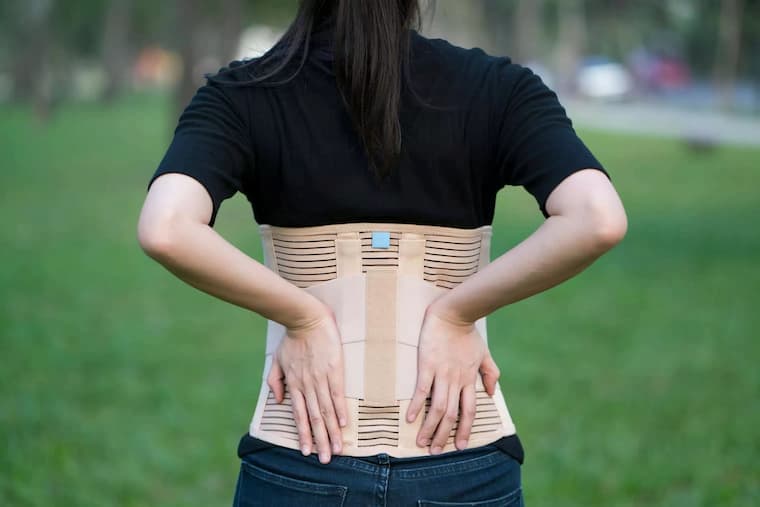
Soft braces are comprised of breathable, soft fabric with adjustable elastic or Velcro closures. Soft braces compress the abdomen area and reduce spinal pressure by supporting the muscles that normally support the skeletal structure. Soft bracing enables the spine to move forwards.
Some soft braces provide support when the wearer is performing heavy lifting at work or at home. Others just give mild, all-day assistance. Depending on the region of need, these orthotics come in various forms and sizes. Some reach from just below the sternum to the hips, and others being much smaller, resemble a big belt.
Because most of these soft braces are adjustable, you won’t need to be measured at an orthotics clinic for a tailored one. However, your medical or orthotics specialist can show you how to use your brace most successfully.
Rigid Braces
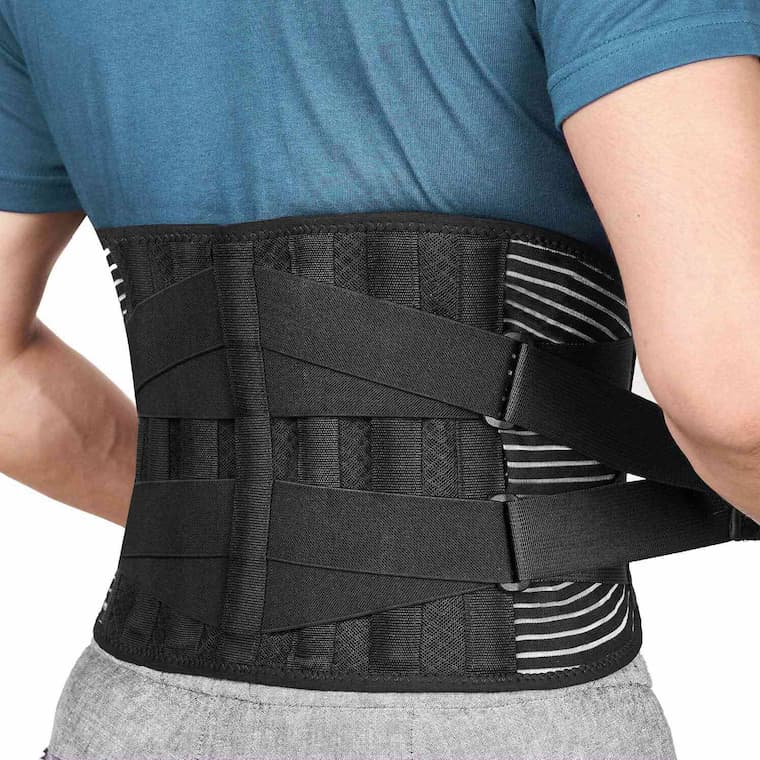
Rigid braces, which include hard panels on the front, back, and/or sides, give the most support and stability to your back. This brace is often composed of hard composite materials or moulded plastic and held together by a strong covering of cotton or canvas that wraps around the body.
Rigid braces are good for patients who have significant pain or are recuperating from an accident or surgery that requires their back to be still. These braces provide comfort by providing strong pressure to the spinal column, shifting weight away from fragile or damaged bones. They also drastically lower spinal segment range of motion and even micro-motion, which is ideal for post-surgical treatments.
Semi-Rigid Braces
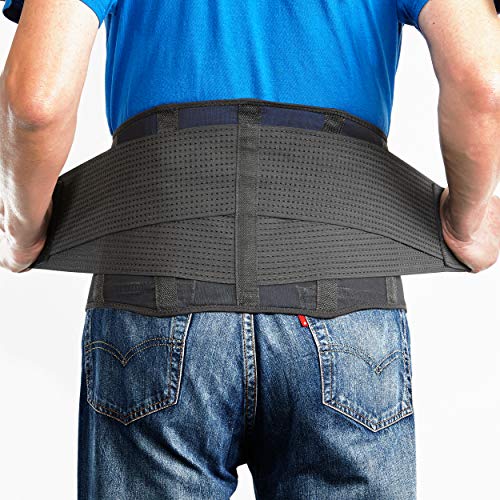
Semi-rigid braces integrate the best features of both flexible and stiff braces into a single design. This is usually accomplished by adding solid supports or extra stiff padding to the body of a flexible brace. These extra supports are often detachable, allowing the user to tailor the amount of stability to their own demands.
The corset brace, which resembles a woman’s corset and features vertical metal or plastic stays that provide support and prevent mobility, is an example of a semi-rigid brace. Depending on the degree of support supplied, these stays are often incorporated throughout the whole circle of the brace, or simply in a few spots on the front, back, or sides.
How to Properly Wear a Back Brace
A prescription brace for back pain should come with use and maintenance instructions from the doctor, the brace manufacturer, or both. These instructions contain advice on how to fit the brace, how to put it on and take it off, and how to clean and care for the same. Many braces are custom-made for the patient’s needs and physique, and if worn inappropriately, they can cause discomfort.
Wearing a back brace incorrectly can irritate the skin, resulting in blisters or rashes. Washing the skin under the brace on a daily basis can help prevent debris and dead skin from accumulating and creating discomfort. Excessive moisture under the brace might irritate the skin and cause ulcers and/or skin degeneration.
As a result, avoid using lotions or moisturisers underneath the brace. After removing it, it is usual to see some red areas on the skin. These stains should disappear in 15 to 30 minutes. If they do not go away, or if the brace causes a rash or bruising on the skin, it is possible that it was not correctly placed and should be adjusted by a doctor or expert.
The manufacturer will normally include specific washing guidelines, which should be followed to ensure the brace’s longevity. Most back braces are not intended to be machine cleaned or dried. Instead, hand wash the brace with water and mild soap. Any extra padding or panels should be removed and cleaned separately first.
A brace should be hung or placed flat to dry. Before wearing the brace, make sure it has been well cleaned and completely dried since a soapy or wet brace is more prone to irritate the skin. It’s also a good idea to use a lint roller to remove any dirt, dust, or debris from the brace.
Who is a Good Candidate for a Back Brace?
In general, any patient with a musculoskeletal disease might benefit from wearing a back support brace by unloading compressive pressures on the spine, or patients who are in desperate need of postural correction. Patients suffering from the following conditions may benefit from spinal bracing because of its unloading, stabilising, and proprioceptive feedback effects: acute sprains and strains, post-operative fusion, laminectomy, discectomy, congenital or traumatic instability, disc herniation, spinal stenosis, postural backache, fractures, and/or degenerative joint/disc disease.
4 Easy Steps to Prevent Snoring
We all know how difficult and annoying snoring can be. If you’re a snorer, you’ll experience breathing pauses through the night, morning headaches, gasping or choking at night or some chest pain. If you have already gone through something like this, your best bet is to see your doctor, as they can help you overcome this condition.
Many factors can cause snoring: the anatomy of your mouth, if you have a thick and low soft palate, if you consume alcohol before bedtime, if you have a crooked partition or chronic nasal congestion and your sleeping position. But there are ways you can fix this problem and have a good night’s sleep once again.
Chin Strap
An anti-snoring chin strap is a contraption that you wear under the chin and is usually made of stretchy material or neoprene-like fabric. It stretches around your head and holds your chin while you sleep. This way, it holds your mouth closed and prevents snoring. This stops air from going to and from your throat, reducing the fast fluttering that is the main source of snoring. A snoring chin strap may not be the greatest option if you snore through your nose because it is designed for mouth snorers.
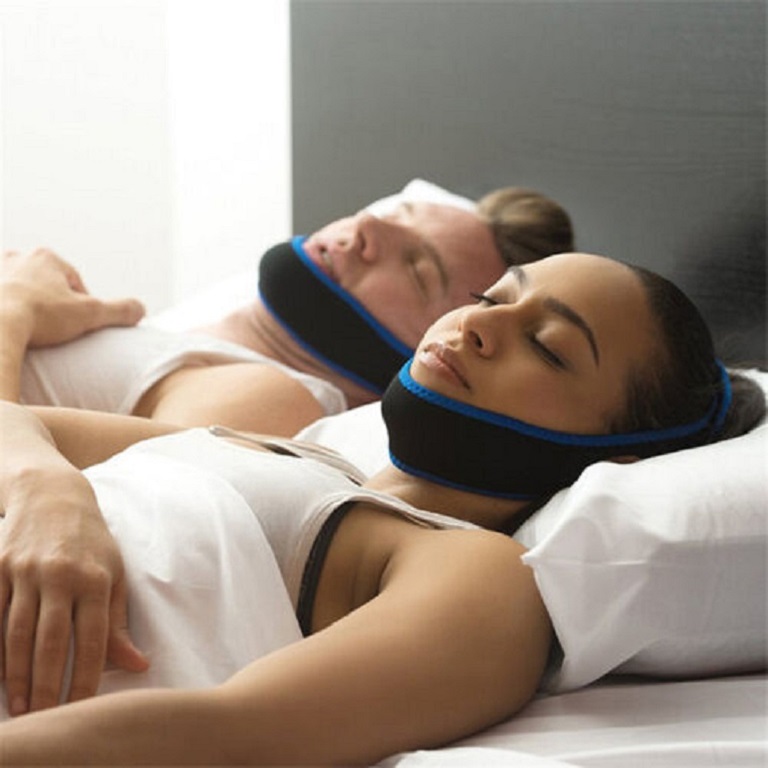
There are many options, and a strap that works for your friend might not work for you. You’ll need to try out different ones to get to the perfect chin snoring strap for you. You’ll come across different designs and levels of adjustability. Also, some of them are more comfortable than others, depending on the material they’re made of. Some have a sizing chart and can be small, medium or large. These chin straps are easy to clean and maintain, plus you can store them without taking up a lot of space.
One chin snoring strap can last at least a year if it’s made out of durable materials. But experts recommend replacing it after 1.5-2 years at least. Always look for a manufacturer that works with warranties, so you can replace it or get it fixed if something happens. People often combine this strap with other devices such as CPAP machines or nasal sprays. One disadvantage of it can be the discomfort it may provide until you get used to it.
CPAP Machines
A CPAP machine, or continuous positive airway pressure machine, is a device that helps you breathe better at night. Its engine generates pressurized steam, passing through an air filter and into a flexible tube. After that, you get purified air into your mouth or nose through a mask that is fastened around your face. The constant flow of oxygen allows you to sleep comfortably and breathe easily.
Over time, manufacturers developed technologies that make these machines even better. They work for everyone no matter the age, sex or how long you’vee had the problem. CPAP machines have an algorithm that recognizes when and how much help you need breathing. This algorithm detects your breathing pattern and accommodates your needs, so you don’t have to keep waking up and adjusting it yourself.
These machines are quiet and often have a light sensor that adjusts their screen brightness, so it doesn’t interrupt your sleep. They have a humidifier installed so your mouth doesn’t go dry and make you feel uncomfortable. Plus, they’re easy to clean and maintain. You’ll need to rinse off the mask and the tube with warm water and mild soap to get the most effective therapy that’s also hygienic.
Snoring Mouthpiece
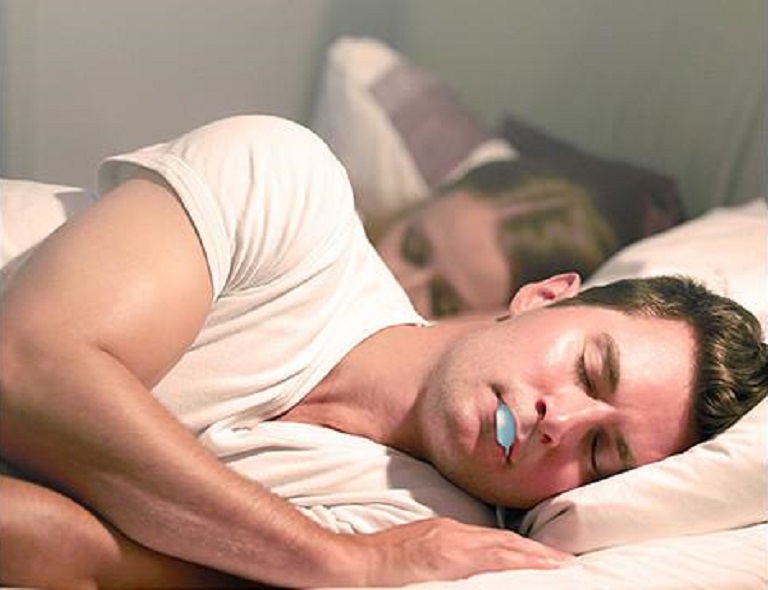
A snoring mouthpiece works by gently moving the lower jaw forwards. The tongue-base musculature, and the lower jaw tissues, change their position and behaviour, and they can no longer relax into the back of the throat. When you wear it, it clears the airways and eliminates snoring. This provides a more comfortable and enjoyable night’s sleep. There are two ways to fit a snoring mouthpiece.
Boiln’Bitee
This method works by putting the mouthpiece in a hot water bath. This will soften the material and make it flexible or waxy. After that, put the mouthpiece in your mouth, bite down hard and hold it like that for a couple of seconds until you feel that it hardened. This creates an impression of your teeth and ensures that the mouthpiece fits properly. At last, you rinse it with cold water and is ready to use. This fitting procedure can be done as many times as you need, and the product will last around 18-24 months.
Custom Made
To get a custom-made mouthpiece, you’d have to go to the dentists, and they’ll take the impression of your teeth. These pieces are very precise and adapt to the position of the jaw. The only disadvantage is that it can be expensive to make it.
Make Lifestyle Changes
Besides buying these devices to help you with snoring, you can also change your sleeping habits and lifestyle. Trying some of these things can help you a lot, and because every person is different, different things will work for everyone.
Sleep on Your Side
Many people snore when they sleep on their back, so doctors often recommend changing their sleeping position and starting sleeping on their side. The placement of the head makes a lot of difference. You can try to place pillows to help you get this habit and prevent you from laying on your back.
Lose Weight
Experts recommend that overweight or obese people lose weight as soon as possible. The fat around your neck makes the diameter of the throat smaller, which can trigger snoring. So, by losing weight and the fat around your neck, the chances of reducing snoring are big.
No Alcohol Before Bed
Drinking alcohol before going to bed increases snoring and causes obstructive sleep apnea, even in persons that don’t have it. Alcohol loosens the muscles, including the ones on your throat, and causes snoring. So, either reduce it to one or two drinks or cut it off completely.
Change Your Pillows
Allergies from dust mites that accumulate on your pillow can also cause snoring. The best way to avoid this is to replace your pillow every 6 months and put it in the fluff cycle every couple of weeks. This will keep it clean and dust mite-free.
In Summary
Snoring is a very annoying and very dangerous condition. It can lead to serious diseases and health problems if you don’t treat it on time and regularly. Try to change your bad habits and lifestyle and see if that helps. If you don’t feel a difference, try some of the snoring devices that will surely help you get a goodnight’s sleep.
Women’s Sex Toys Guide: Crank Up the Heat in the Bedroom
Do you like to engage in some solo fun every now and then? The occasional flicking of the bean? It doesn’t matter if you have a high sex drive, or you’re just looking to relieve some stress, solo sex is surely one of the most effective ways to do it. Not only that, but such activities carry a range of other health benefits, such as boosting your immunity and even prolonging your lifespan. Not too shabby, right?
Stepping Forward Toward Your Goals: Ways to Grow Muscle Faster
Building muscle doesn’t happen overnight. However, if you can’t see an obvious difference between a month to month of weight training and eating right, there must be something that you’re doing wrong. It’s good to know that the human body can build around 227g of muscle per week, so aiming for more than that will only result in gaining more weight. Whether your main goal is aesthetics or strength, there are a few foolproof ways you can improve your routine to see results faster.
Own the Dance Stage: Step Up Your Hair and Makeup Game
Make sure you buy glitter spray from a dance store that specializes in it.
Toenail Fungus: Staying One Step Ahead
Fungal nail infection is the result of the overgrowth of fungal organisms in, under, or on the nail. The most common cause is a type of fungus called dermatophyte, however, yeast and moulds can cause nail infections too. Although they can develop at any age under the right circumstances, fungal infections are more common in older adults, especially males.
How to Prevent Varicose Veins from Getting Worse
The premium Jobst relief compression stockings medical-grade model is one of the best compression stockings available for varicose veins.

